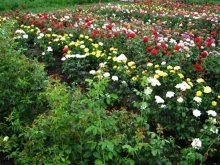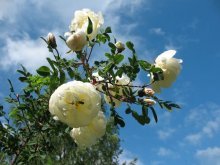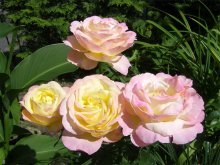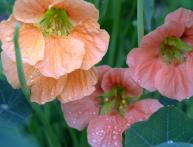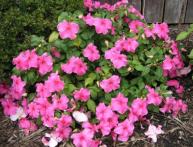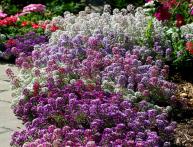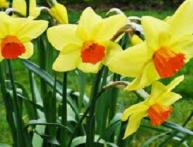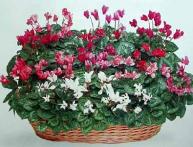Proper care of a rose: how to grow the queen of the garden?
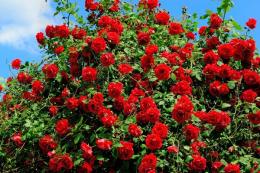
A rose is not just a flower, but an object of admiration and worship, a recognized symbol of love. But in order for a fragile seedling to turn into a luxurious bush, you will have to work hard.
Content:
Proper planting of flowers
Purchasing quality seedlings significantly increases the chances of success. Plants with a closed rhizome are considered the best: they take root faster and are more resistant to pathogens. When planting, the soil around the root system is left untouched.
In spring, in mid-latitudes, roses are planted when the soil has warmed up to +100C. This is the end of April - beginning of May. This time is suitable for standard roses.
For most species, autumn planting is preferable. Work begins from mid-September to the second half of October.
Early planting is dangerous: in the warmth, shoots will grow that will not have time to gain strength before the arrival of winter. If you are late with gardening work, then the poorly rooted seedling will die from the first frost.
Rose loves sunny areas. In the shade it will stop blooming and its leaves will become covered with dark spots. The flower becomes vulnerable to powdery mildew. A ventilated but draft-proof flower bed is suitable.
How to properly plant a rose and care for it, watch the video:
The plant has no special requirements for soil. Any soil is suitable for it, with the exception of heavy clay and light sandy loam.Groundwater on the site should not come close to the surface of the earth.
Steps to take when landing:
- Dig a hole of such size that there is room for the rhizome (approximately 50x50 cm).
- Prepare a nutrient mixture (humus or compost, rotted manure and soil). Immediately cover the roots with soil so that the fertilizer does not come into contact with them.
- Pour water and let it absorb.
- Cut the free root to 1/3 of its length and soak in water. Leave the closed rhizome intact. Shorten shoots.
- Cover the seedling with soil. The grafting site is 5 cm underground.
- Compact the soil. Water again.
- Hill up the plant by 10-15 cm. After 14 days, remove the hill.
Watering and feeding roses
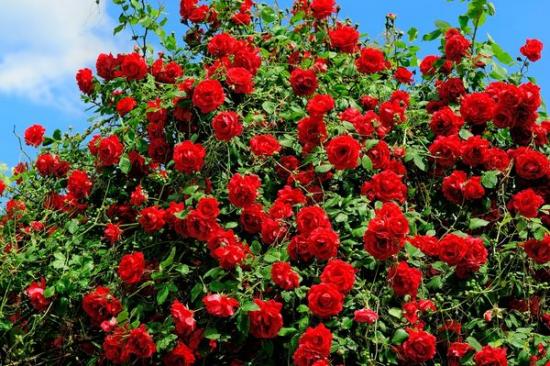
A young rose planted in the spring is watered once every two days. Then water it as the soil dries (no more than once every 7 days).
Roses need water during the period of active growth, bud formation and flowering. When there is not enough moisture, the shoots stop developing and wither, the buds become smaller and lose their decorative effect.
It is not recommended to water the plant with cool water in hot weather: the roots do not absorb it well. The flower likes melt or rain water: the concentration of mineral salts in it is minimal. The ideal option is infrequent but abundant watering.
It is correct to make a hole around the stem, surrounded by a roller of soil. It should look like a bowl. It will hold a lot of water and will not let it run away. An adult bush needs 10 liters of water. It is poured in a weak stream, protecting the roots. In autumn, watering is practically not needed. Drops of moisture falling on leaves and buds lead to fungal infection.
If the soil is sufficiently fertilized during planting, then in the first year of life young bushes do not need additional minerals. After pinching the buds, the rose is fed with organic substances. An infusion of mullein, chicken droppings, or a ready-made store-bought product will do.
The first feeding of adult bushes is carried out in the spring, when the buds begin to bloom. With their appearance, roses will “tell” about what elements they are missing:
- The bush stops growing due to nitrogen deficiency. An excess of the substance in the soil leads to vigorous growth of green mass; the shoots do not ripen and do not tolerate cold well.
- Young leaves become smaller and fall off early due to a lack of phosphorus. The rose is weakening and blooming poorly.
- Magnesium deficiency manifests itself as a change in the color of the middle of the leaf and the death of tissue near the central vein.
- Due to a lack of potassium, young leaves turn red and the edges of adults dry out.
- A signal of iron deficiency is yellowing of young foliage.
Both lack of moisture and excessive moisture are dangerous for roses. watering.
Loosening and mulching
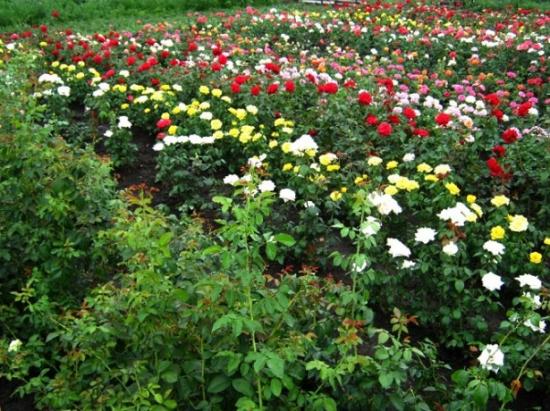
For the health of the bush, it is important that the soil is cleared of weeds and loosened. Such soil allows air and moisture to pass through well, promoting active growth of rhizomes. Work is carried out at least once a month.
Loosening is carried out by:
- After rain and watering
- Right after feeding
- In the spring, when the ground has completely thawed
- Before covering a flower for the winter
The maximum thickness of the fluffy layer is 6 cm. Deeper are the roots that can be damaged.
Mulching is done in the spring (late April-early May) and in the fall after pruning. They use straw, compost, shredded tree bark, sawdust, leaf humus, and mown grass.They begin work after tilling the soil (removing weeds, watering, loosening, fertilizing).
The thickness of the protective layer is 4-8 cm. It should not come into contact with ground shoots.
- Over time, the mulch will turn into humus. Then the soil is loosened and a new layer is poured.
- The role of mulching:
- Preventing the development of fungal diseases and weeds
- Fertilizer soil
- Soil insulation
- Preventing water stagnation in rainy weather
- Prevents excessive evaporation of moisture and drying out of the soil
Pest Control
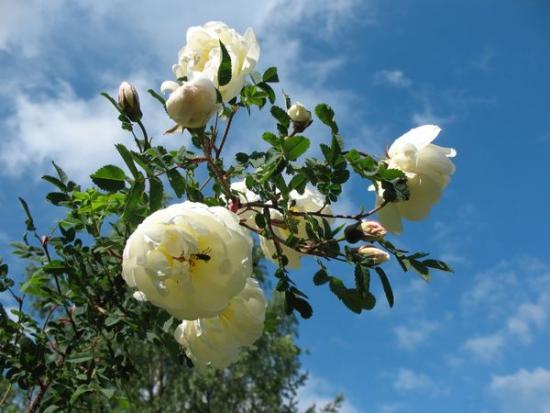
Powdery mildew is the most unpleasant disease for a garden rose. Prevention will help prevent trouble. It consists of spraying the leaves with a solution of baking soda (40 g per 1 liter of water). Treatment begins in the spring (2-3 times a week). They do it until mid-June.
Aphids are an equally dangerous enemy for crops. They fight it by preparing a special solution for spraying. Add a piece of crushed laundry soap and 1-2 branches of wormwood to 1 bucket of water. The liquid is boiled for 10-15 minutes. The cooled and strained mixture is ready for use.
After 7 days, re-treatment is carried out. If the parasite does not respond, you need to purchase a systemic poison. Neighbors of roses such as lavender or nasturtium repel aphids.
Timely prevention will help prevent roses from being damaged by powdery mildew and aphids.
Rose bushes can survive and bloom without much care. Only with the right support will flowers reveal their full potential and become a real decoration of the garden.
Interesting information about the vegetable garden

